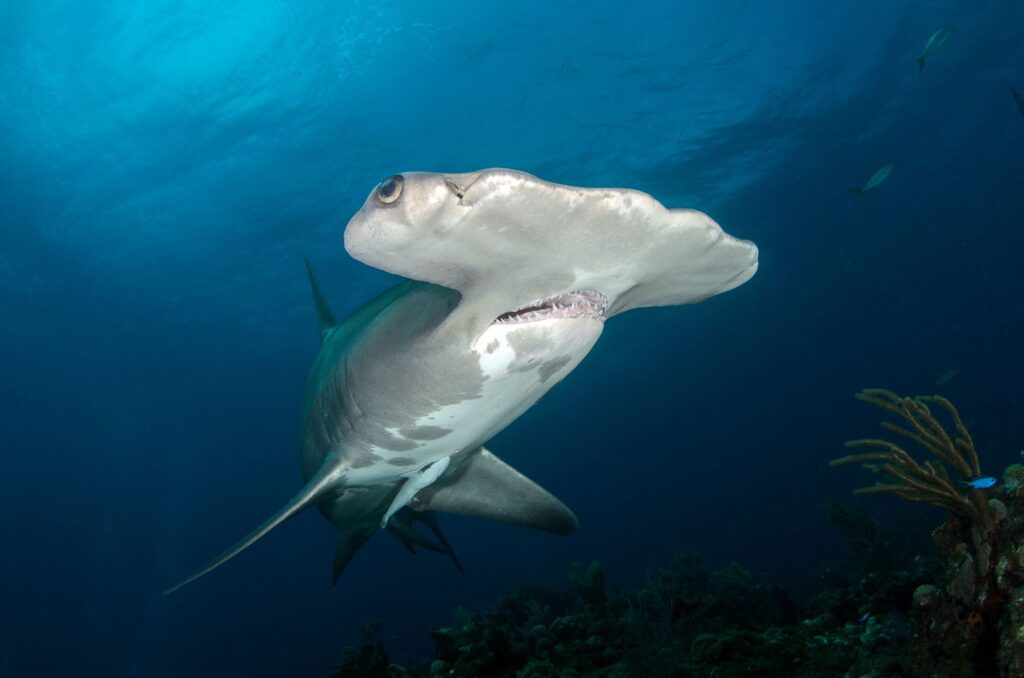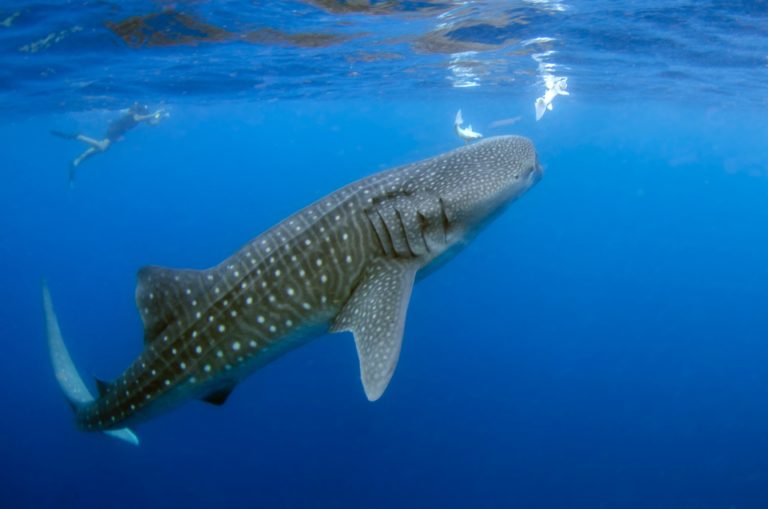Today (30 August) is International Whale Shark Day, and whale sharks are by a big margin the deepest divers among 13 shark species that spend more time at great depth than had previously been realised, according to a new study.
Whale sharks dive to depths approaching 2km and great whites can travel beyond 1.2km down, while 11 other types of shark are now known to dive deeper than 1km. The findings come from a global study that conservation scientists say provides the first analysis of how sharks, rays and skates travel in the vertical plane.
Also read: Why hammerhead sharks dive on breath-hold
Led by the Zoological Society of London’s Institute of Zoology and Hopkins Marine Station at Stanford University in California, the study involved 171 researchers from 135 institutions. They analysed data from 989 biotelemetry tags attached to 38 elasmobranch species in waters from the North Pacific to the Indian Ocean, and the Arctic to the Caribbean.
Also elaborated on by the research was how certain species vary their depth preferences depending on where they are in the world and between night and daytime periods, as the predators hunt prey and, in some cases, take measures to avoid becoming prey themselves.
The reason that species usually found in shallower waters were recorded diving so deep could not be confirmed, but it is thought likely to be a combination of seeking food sources, body-temperature regulation, reproduction and predator avoidance.
3D shark map
Twenty-six of the 38 species, including oceanic whitetip, tiger, scalloped hammerhead and silky sharks, spent more than 95% of their time in the top 250m of the water column – at depths at which they are most likely to be endangered by fishing activities.

“The way that large marine animals use the horizontal space in our ocean has been well studied,” said ZSL research fellow and co-lead author of the paper Dr David Curnick. “However, until now, comparative studies in the vertical planes have been limited, despite the ocean being an average 3.5km deep and elasmobranchs occupying all levels within this dynamic environment.”
More than a third of all sharks and rays are threatened with extinction, according to the IUCN Red List of Threatened Species. The researchers believe that constructing a 3D map of how elasmobranchs use the ocean in all dimensions is vital to understanding the roles they play in wider ecosystems – and determining their individual exposure to threats.
“By looking at a wide range of elasmobranch species in this study, we demonstrate how they face overlapping risks, such as targeted fisheries and getting caught in nets, also known as bycatch,” said Dr Curnick.
“This is an important step for both understanding which sharks and rays are most likely to face threats, but also to consider how changing temperature and oxygen levels may influence their vertical distributions,” pointed out co-lead author and Stanford post-doctoral research fellow Dr Samantha Andrzejaczek.
With many parts of the oceans suffering oxygen depletion and chemical shifts, many species have already been driven into unfamiliar territory and habitats, say the researchers. They emphasise that better understanding of their ecology can inform predictions of how reduced oxygen availability at certain depths could limit elasmobranchs’ vertical movements, and help to predict the wider implications of climate change.
“Knowing just how deep some species dive – or don’t dive – will help us to inform much-needed conservation plans for these species and their relatives – for example, more widespread use of bycatch avoidance strategies,” said Dr Curnick “It will also help us understand how these animals are likely to respond to the predicted climate-induced changes to our oceans.”
The study is published in Science Advances. Find more about whale sharks on International Whale Shark Day with PADI's Diving With Whale Sharks: Everything You Should Know
Also on Divernet: Big Fish Draw Big Spenders, Where The Whale Sharks Are, Want To See Whale Sharks? No Problem

